41 semiconductor nanocrystals as fluorescent biological labels
Simultaneous phase and size control of upconversion nanocrystals ... 25. helmik. 2010 · Upconversion nanocrystals are luminescent nanomaterials that convert a near-infrared excitation into a visible emission through lanthanide doping 10,11.Compared to organic fluorophores and ... Semiconductor Nanocrystals as Fluorescent Biological Labels Abstract: Semiconductor nanocrystals were prepared for use as fluorescent probes in biological staining and diagnostics. Compared with conventional fluorophores, the nanocrystals have a narrow, tunable, symmetric emission spectrum and are photochemically stable.
Semiconductor nanocrystals as fluorescent biological labels. Semiconductor nanocrystals were prepared for use as fluorescent probes in biological staining and diagnostics. Compared with conventional fluorophores, the nanocrystals have a narrow, tunable, symmetric emission spectrum and are photochemically stable.
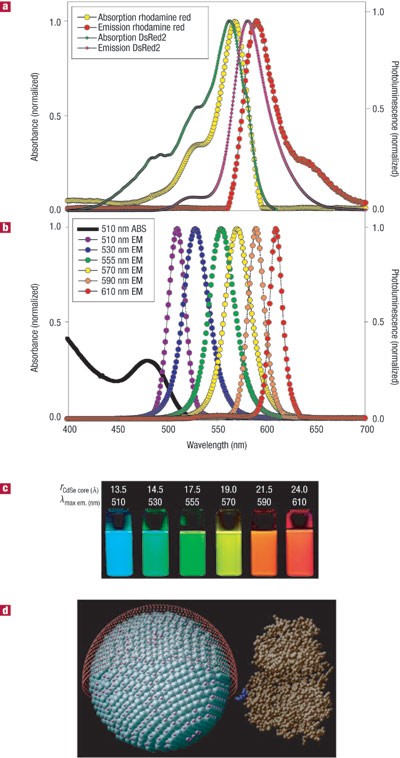
Semiconductor nanocrystals as fluorescent biological labels
Semiconductor nanocrystals as fluorescent biological labels DOI: 10.1126/science.281.5385.2013 Semiconductor nanocrystals were prepared for use as fluorescent probes in biological staining and diagnostics. Compared with conventional fluorophores, the nanocrystals have a narrow, tunable, symmetric emission spectrum and are photochemically stable. Quantum Confinement Effect - an overview | ScienceDirect Topics In Nanostructured Semiconductor Oxides for the Next Generation of Electronics and Functional Devices, 2014. 6.5.2 PbS and PbSe quantum dot layers. It has been reported that the quantum confinement effect contributes to the extension of the photovoltaic potential of low-bandgap semiconductors such as PbS or PbSe (bandgaps are about 0.41 157 and 0.27 eV 158 for PbS and PbSe, respectively) by ... Carbon Nanoparticle-based Fluorescent Bioimaging Probes Fluorescent nanoprobes based on doped semiconductor nanocrystals 50, fluorescent gold clusters ... We have also demonstrated that functionalised FCNs can be used as fluorescent biological labels ...
Semiconductor nanocrystals as fluorescent biological labels. Developing New Nanoprobes from Semiconductor Nanocrystals Specifically speaking, two strategies have beenapplied. In one, we have taken advantage of the increasing capability ofmanipulating the shape of semiconductor nanocrystals by developingsemiconductor quantum rods as fluorescent biological labels. In theother, we have assembled quantum dots and gold nanocrystals into discretenanostructures using DNA. Semiconductor Nanocrystals as Fluorescent Biological Labels adshelp[at]cfa.harvard.edu The ADS is operated by the Smithsonian Astrophysical Observatory under NASA Cooperative Agreement NNX16AC86A Semiconductor nanocrystals as fluorescent biological labels DOI: 10.1126/science.281.5385.2013 Abstract Semiconductor nanocrystals were prepared for use as fluorescent probes in biological staining and diagnostics. Compared with conventional fluorophores, the nanocrystals have a narrow, tunable, symmetric emission spectrum and are photochemically stable. 3C-SiC Nanocrystals as Fluorescent Biological Labels After the uptake of3C-SiC nanocrystals, human fetal osteoblast (hFOB) cells exhibit brightgreen-yellow fluorescence (see image).The nanoparticles show high resistanceagainst photobleaching with no significant cytotoxicity. Citing Literature Volume 4, Issue 8 August 2008 Pages 1058-1062 Download PDF
Synthesis of Inorganic Nanocrystals for Biological Fluorescence Imaging ... Reported spectral ranges of emission for different semiconductor nanocrystals. 1.1. Semiconductor Nanocrystals as Fluorescent Biological Labels Although initially supposed to be used in transistors, the first application of semiconductor nanocrystals to be developed was biological labelling. Semiconductor Nanocrystals as Fluorescent Biological Labels Semiconductor nanocrystals were prepared for use as fluorescent probes in biological staining and diagnostics. Compared with conventional fluorophores, the nanocrystals have a narrow, tunable, symmetric emission spectrum and are photochemically stable. The advantages of the broad, continuous excitation Semiconductor nanocrystals as fluorescent biological labels Semiconductor nanocrystals as fluorescent biological labels Author BRUCHEZ, M. JR 1 2; MORONNE, M 3; GIN, P 3; WEISS, S 4; ALIVISATOS, A. P 1 2 [1] Department of Chemistry, University of California, Berkeley, CA 94720, United States [2] Materials Sciences Division, Lawrence Berkeley National Laboratory (LBNL), 1 Cyclotron Road, Berkeley, CA 94720, United States [3] Life Sciences Division, LBNL ... The surface science of nanocrystals | Nature Materials 22. tammik. 2016 · The role of surface ligands in tuning the optoelectronic properties, controlling the stability and determining the performance in applications of colloidal nanocrystals is discussed in this Review.
Quantum dot - Wikipedia Quantum dots (QDs) are semiconductor particles a few nanometres in size, having optical and electronic properties that differ from those of larger particles as a result of quantum mechanics.They are a central topic in nanotechnology.When the quantum dots are illuminated by UV light, an electron in the quantum dot can be excited to a state of higher energy. Cadmium selenide - Wikipedia Production of cadmium selenide by arrested precipitation in solution is performed by introducing alkylcadmium and trioctylphosphine selenide (TOPSe) precursors into a heated solvent under controlled conditions.. Me 2 Cd + TOPSe → CdSe + (byproducts). CdSe nanoparticles can be modified by production of two phase materials with ZnS coatings. Semiconductor quantum dots: Technological progress and future … 6. elok. 2021 · The confinement found in colloidal semiconductor quantum dots enables the design of materials with tunable properties. García de Arquer et al. review the recent advances in methods for synthesis and surface functionalization of quantum dots that enable fine tuning of their optical, chemical, and electrical properties.These important developments have driven the … Biosynthesis of Nanoparticles by Microorganisms and Their May 16, 2011 · The development of eco-friendly technologies in material synthesis is of considerable importance to expand their biological applications. Nowadays, a variety of inorganic nanoparticles with well-defined chemical composition, size, and morphology have been synthesized by using different microorganisms, and their applications in many cutting-edge technological areas have been explored. This ...
Semiconductor Quantum Rods as Single Molecule Fluorescent Biological Labels In this paper, we report the development of rod-shaped semiconductor nanocrystals (quantum rods) as fluorescent biological labels. Water-soluble biocompatible quantum rods have been prepared by surface silanization and applied for nonspecific cell tracking as well as specific cellular targeting.
Semiconductor Quantum Rods as Single Molecule FluorescentBiological Labels The U.S. Department of Energy's Office of Scientific and Technical Information
Semiconductor Nanocrystals as Fluorescent Biological Labels 豆丁网是面向全球的中文社会化阅读分享平台,拥有商业,教育,研究报告,行业资料,学术论文,认证考试,星座 ...
PDF Semiconductor Nanocrystals as Fluorescent Biological Labels Metallic and magnetic nanocrystals, with the appropriate organic derivatization of the surface, have been used widely in biological experiments (6-11). The use of semiconduc-tor nanocrystals in a biological context is potentially more problematic because the high surface area of the nanocrystal might lead to reduced luminescence efficiency and
3C-SiC Nanocrystals as Fluorescent Biological Labels Silicon carbide nanocrystals are water-soluble, chemically inert, and highly fluorescent, and they may be idealas biological labels. After the uptake of3C-SiC nanocrystals, human fetal osteoblast (hFOB) cells exhibit brightgreen-yellow fluorescence (see image).The nanoparticles show high resistanceagainst photobleaching with no significant ...
Fluorescence Fundamentals | Thermo Fisher Scientific - US Fluorescence is the result of a three-stage process that occurs in certain molecules (generally polyaromatic hydrocarbons or heterocycles) called fluorophores or fluorescent dyes (Figure 1).A fluorescent probe is a fluorophore designed to respond to a specific stimulus or to localize within a specific region of a biological specimen.
Properties of fluorescent semiconductor nanocrystals and their ... N2 - We review recent advances in the development of colloidal fluorescent semiconductor nanocrystals (a class of quantum dots) for biological labeling. Although some of the photophysical properties of nanocrystals are not fully understood and are still actively investigated, researchers have begun developing bioconjugation schemes and applying ...
Semiconductor Nanocrystals for Biological Imaging and Fluorescence ... Semiconductor nanocrystals (SNCs), referred to as quantum dots (QDs), are nano-sized crystals with diameters ranging from 2 to 10 nm (Alivisatos 1996).As such, they are larger than conventional organic dyes in size, and comparable to the size of fluorescent proteins (Giepmans et al. 2006), other large biomolecules, and the exciton Bohr radius that is the distance of the excited electron-hole ...
Semiconductor Nanocrystals as Fluorescent Biological Labels - ResearchGate University of California, Los Angeles Abstract and Figures Semiconductor nanocrystals were prepared for use as fluorescent probes in biological staining and diagnostics. Compared with...
Liquid crystal-templated chiral nanomaterials: from chiral ... - Nature 14. heinäk. 2022 · Chiral nanomaterials with intrinsic chirality or spatial asymmetry at the nanoscale are currently in the limelight of both fundamental research and diverse important technological applications due ...
Semiconductor Nanocrystals: The Next Thing in Fluorescent Probes "The development of semiconductor nanocrystals for biological labeling gives biologists an entire new class of fluorescent probes for which no small organic molecule equivalent exists," the authors of the Science paper wrote. "These nanocrystal probes can be complementary and in some cases may be superior to existing fluorophores."
PDF Ovid: Bruchez: Science, Volume 281(5385).September 25, 1998.2 Semiconductor nanocrystals were prepared for use as fluorescent probes inbiological staining and diagnostics.Compared with conventional fluorophores, thenanocrystals have a narrow,
Luminescent nanomaterials for biological labelling - IOPscience The newer classes of fluorescent labels are gaining increasing popularity in place of their predecessors due to their better optical properties such as possessing an enhanced photostability and a larger Stokes shift over conventional organic fluorophores, for example. ... Bruchez M Jr et al 1998 Semiconductor nanocrystals as fluorescent ...
A novel fluorescent label based on biological ... - SpringerLink Uniform-sized fluorescent nanoparticles have been prepared by employing silica as the shell and a highly luminescent dye complex of ruthenium ion and bipyridyl, tris(2,2'-bipyridyl) dichlororuthenium(II) hexahydrate as the core of the nanoparticles. A novel fluorescent label method is proposed, which is based on the biological fluorescent nanoparticles on the foundation of nanotechnology ...
Semiconductor nanocrystals for biological imaging - ScienceDirect Semiconductor nanocrystals (see glossary), also called quantum dots (QDs), are a new class of fluorescent biological labels. Originating from quantum confinement (see glossary) of electrons and holes within the nanocrystal core material, the fluorescence from QDs is unique compared with that from traditional organic fluorophores. For example ...
Semiconductor nanocrystals as fluorescent biological labels - Academia.edu Semiconductor nanocrystals as fluorescent biological labels . × Close Log In. Log in with Facebook Log in with Google. or. Email. Password. Remember me on this computer. or reset ... Semiconductor nanocrystals as fluorescent biological labels. Chandan Kumar Singh. 1998, Science. Continue Reading. Download Free PDF. Download.
Methods and Applications in Fluorescence - IOPscience Methods and Applications in Fluorescence is an internationally leading journal, which welcomes contributions on the study, application, techniques and instrumentation of fluorescence. These encompass biological, medical, chemical, material and nano research using experimental, theoretical and data analysis methods, which span probes, spectroscopy, imaging and …
Carbon Nanoparticle-based Fluorescent Bioimaging Probes Fluorescent nanoprobes based on doped semiconductor nanocrystals 50, fluorescent gold clusters ... We have also demonstrated that functionalised FCNs can be used as fluorescent biological labels ...
Quantum Confinement Effect - an overview | ScienceDirect Topics In Nanostructured Semiconductor Oxides for the Next Generation of Electronics and Functional Devices, 2014. 6.5.2 PbS and PbSe quantum dot layers. It has been reported that the quantum confinement effect contributes to the extension of the photovoltaic potential of low-bandgap semiconductors such as PbS or PbSe (bandgaps are about 0.41 157 and 0.27 eV 158 for PbS and PbSe, respectively) by ...
Semiconductor nanocrystals as fluorescent biological labels DOI: 10.1126/science.281.5385.2013 Semiconductor nanocrystals were prepared for use as fluorescent probes in biological staining and diagnostics. Compared with conventional fluorophores, the nanocrystals have a narrow, tunable, symmetric emission spectrum and are photochemically stable.
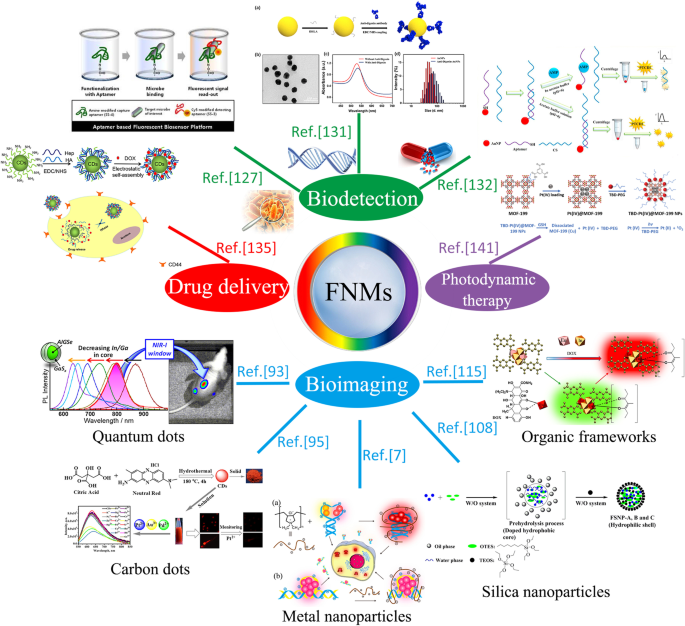



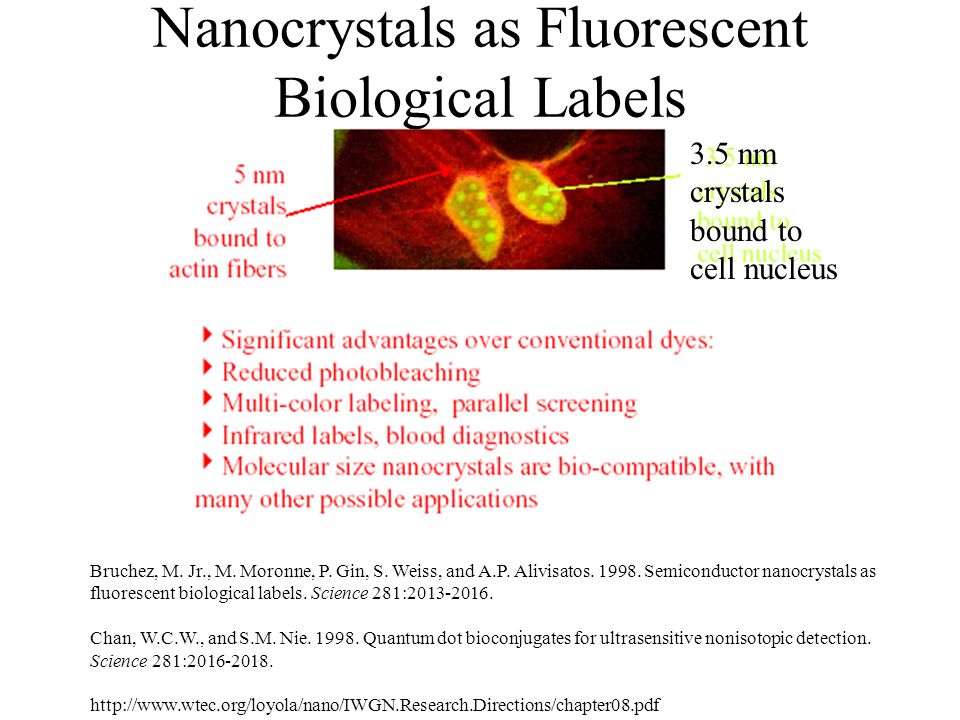



![PDF] Properties of Fluorescent Semiconductor Nanocrystals and ...](https://d3i71xaburhd42.cloudfront.net/981258acf35431bfbd83d284071a80afecdd27d6/8-Figure6-1.png)





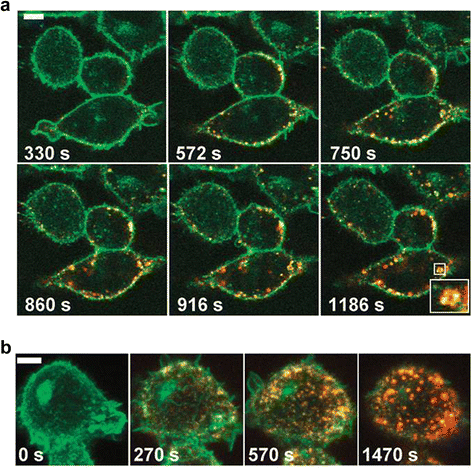

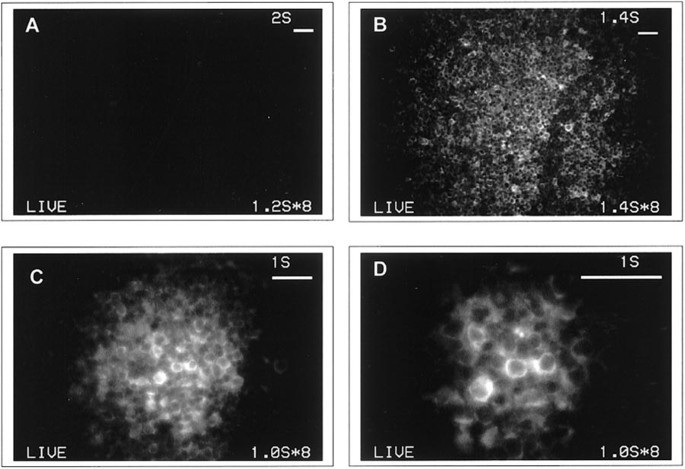




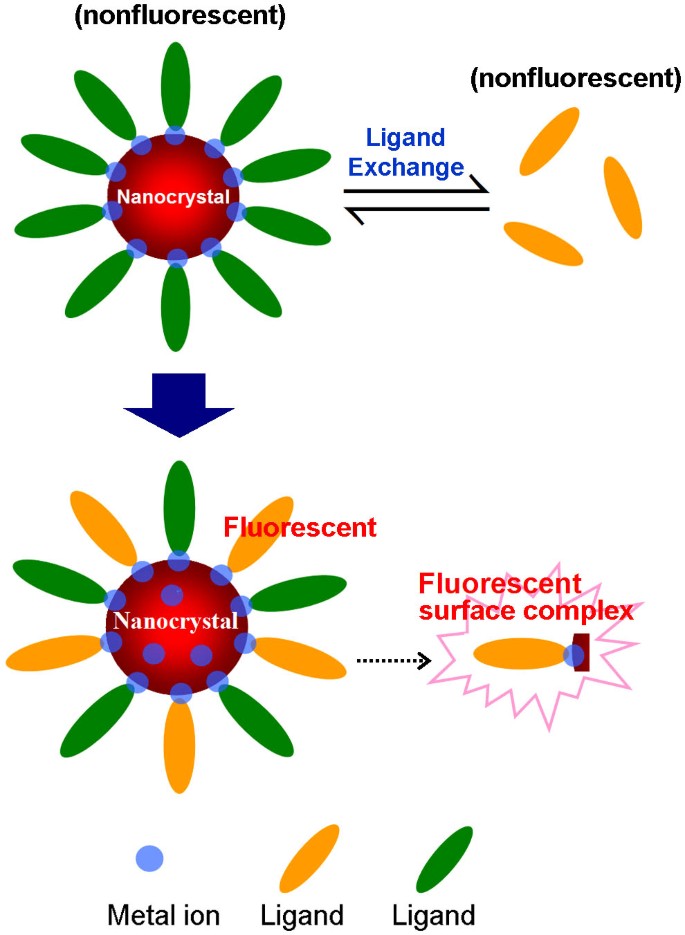
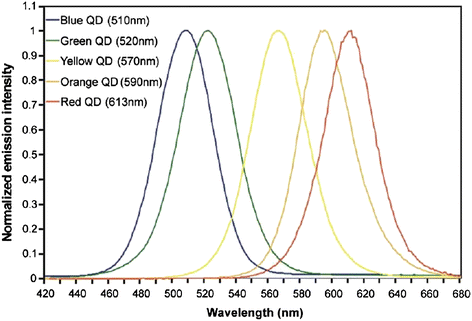








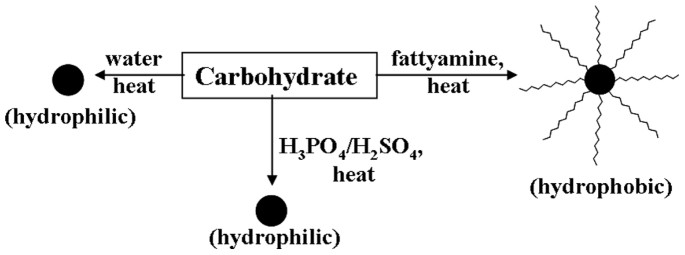
Post a Comment for "41 semiconductor nanocrystals as fluorescent biological labels"